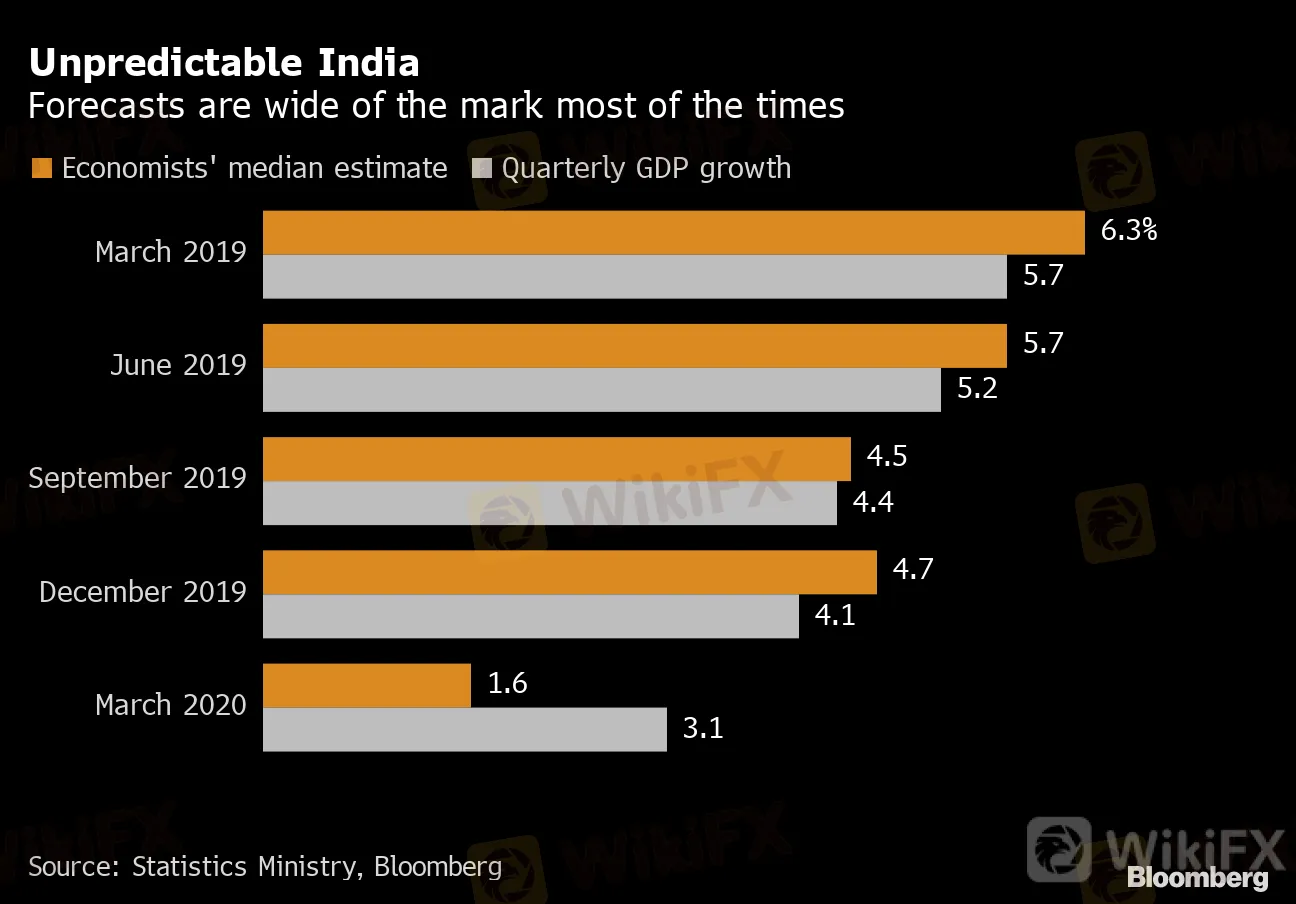简体中文
繁體中文
English
Pусский
日本語
ภาษาไทย
Tiếng Việt
Bahasa Indonesia
Español
हिन्दी
Filippiiniläinen
Français
Deutsch
Português
Türkçe
한국어
العربية
Predicting Indias GDP Growth Is Getting Even Harder
Abstract:The coronavirus pandemic has made the job of predicting Indias economic growth -- already a fraught process in normal times -- even harder.
The coronavirus pandemic has made the job of predicting Indias economic growth -- already a fraught process in normal times -- even harder.
Economists are bracing for possible big swings in the quarterly gross domestic product data scheduled for release on Aug. 31 and significant revisions going forward. The statistics office suspended field surveys for several months after India went into lockdown in March, resulting in substantial data gaps.
Forecasts for GDP in the quarter through June range from a contraction of 15% to a decline of 25.9%, with a median estimate of -19.2% -- representing the worst performance since India started reporting quarterly data in 1996.
Unpredictable India
Forecasts are wide of the mark most of the times
Source: Statistics Ministry, Bloomberg

{21}
Measuring last quarters GDP has been the “most challenging exercise in a long time,” Sumedha Das Gupta, an economist at ICICI Bank Ltd., wrote in a report on Aug. 25. “Difficulty in gauging the extent of economic disruption under lockdowns may result in a starkly different number.”
{21}
The lack of field surveys add to the data complexities, with output in several sectors likely to be estimated and later revised once the hard numbers become available in coming months.
The data gaps could “imply imputation of value-added across major sub-sectors based on limited information from high-frequency indicators and thus prone to large revisions over time,” said Gaurav Kapur, an economist with IndusInd Bank Ltd. in Mumbai.
Incomplete price-level data, which are used as deflators to arrive at real growth, would also affect GDP numbers, he said.
Even before the pandemic, Indias GDP statistics have been a source of contention. A change in the methodology to calculate GDP introduced in 2015 made forecasting difficult, prompting some economists to use their own trackers of high-frequency indicators, which compare more closely with the old GDP series. Some are now relying on proxies to estimate output in the three months to June.
Read More: Indias Economic Statistics Have a Credibility Problem
Economists are already updating their forecasts based on numbers available from alternative sources, like companies and tax collection.
{31}
State Bank of Indias Soumya Kanti Ghosh revised his fiscal first-quarter GDP estimate to a 16.5% year-on-year decline, milder than the 20% contraction previously predicted, “though with the relevant caveats in the current uncertain scenario.”
{31}
Disclaimer:
The views in this article only represent the author's personal views, and do not constitute investment advice on this platform. This platform does not guarantee the accuracy, completeness and timeliness of the information in the article, and will not be liable for any loss caused by the use of or reliance on the information in the article.
WikiFX Broker
Latest News
Geopolitical Events: What They Are & Their Impact?
Top 10 Trading Indicators Every Forex Trader Should Know
Why Do You Feel Scared During Trade Execution?
Currency Calculator


